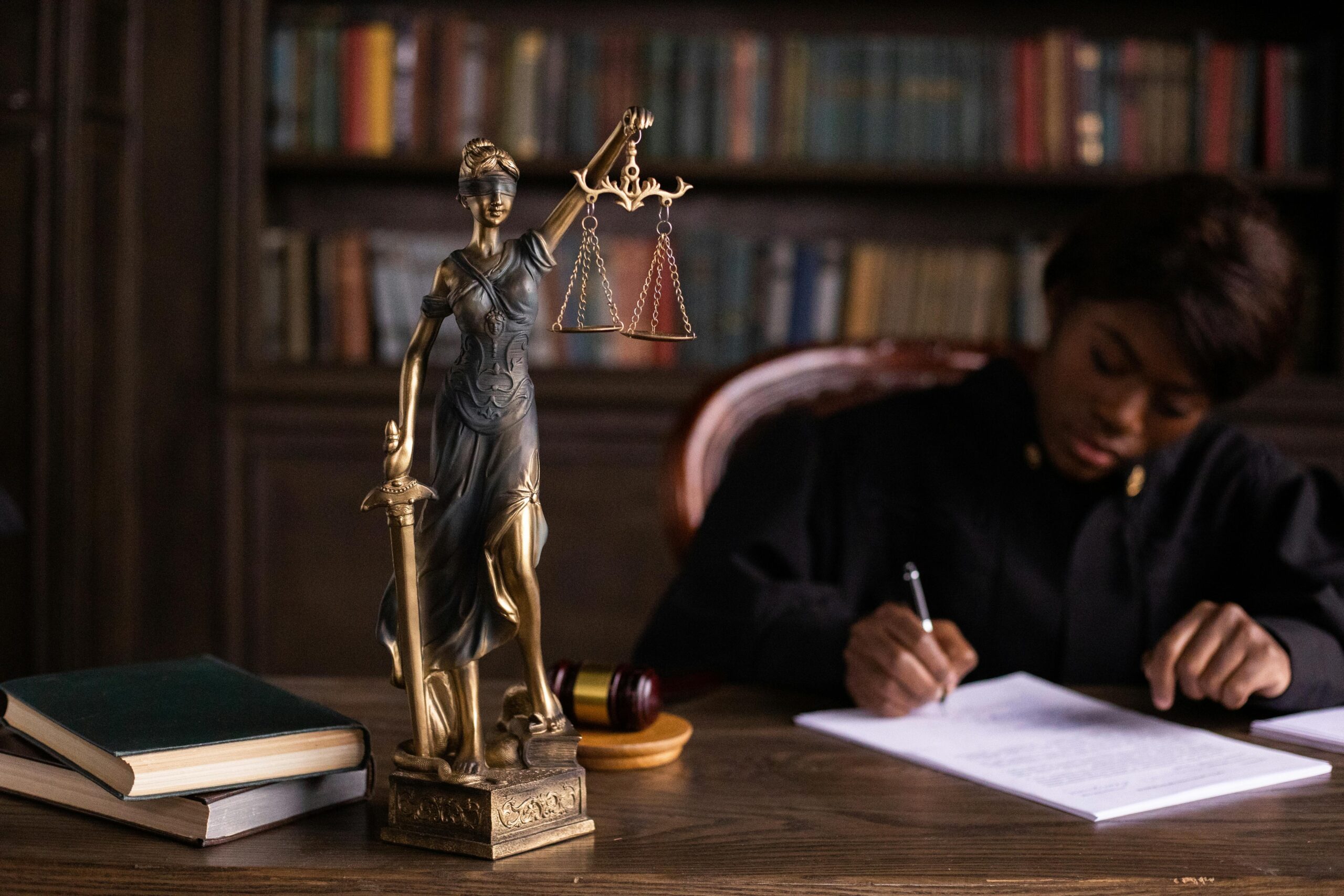Authored By: Baibhav Kumar Nayak
SOA National Institute of Law
Introduction
The doctrine of stare decisis is a fundamental principle that underpins modern legal systems, especially those following the common law tradition. Derived from the Latin phrase meaning “to stand by things decided,” stare decisis requires courts to follow legal precedents established in previous judgments. This doctrine ensures continuity, certainty, and consistency in law, enabling citizens, businesses, and governments to regulate their conduct with confidence about the legal consequences of their actions.
This article explores the meaning, history, importance, operation, exceptions, and challenges of the doctrine, particularly in the context of Indian and comparative international jurisprudence.
Meaning and Concept
The term stare decisis captures the legal obligation of courts to respect the rulings of higher courts or past rulings in similar cases. It promotes the notion that once a court has decided an issue, it should be followed by that court and other courts in future cases unless there is a strong reason to overturn it.
In a broader sense, the doctrine distinguishes between two types of precedents:
- Binding Precedent: Decisions by higher courts that lower courts must follow.
- Persuasive Precedent: Decisions that are not mandatory but can influence a court’s judgment (e.g., decisions from other jurisdictions).
In India, Article 141 of the Constitution makes it clear that “the law declared by the Supreme Court shall be binding on all courts within the territory of India.” Thus, decisions of the Supreme Court have the force of law across the country.
Historical Background
The doctrine has its roots in English common law, which developed through customs, judicial decisions, and scholarly opinions rather than codified statutes. In medieval England, judges started recording their decisions and consulting prior cases to resolve disputes. Over time, these earlier decisions became authoritative.
When British rule extended to colonies, including India, the system of common law, with its emphasis on precedents, was introduced. Consequently, stare decisis became integral to the Indian legal system as well.
In the United States, the doctrine was also inherited from English law and became foundational for the American legal system, although the U.S. Constitution’s principles sometimes lead courts to overturn precedents more readily than in the UK or India.
Importance of Stare Decisis
- Certainty and Predictability:
Citizens and businesses can organize their affairs based on established legal principles. They are less likely to be surprised by arbitrary rulings. - Equality and Fairness:
Like cases are treated alike. Two individuals in similar circumstances should receive similar legal outcomes. - Judicial Efficiency:
Courts are saved from the need to rethink legal questions from scratch each time a similar case arises. It streamlines judicial processes. - Respect for Institutional Authority:
It strengthens the judiciary’s credibility. Public confidence in the legal system grows when decisions are seen as consistent and principled. - Encouragement of Stability in Law:
Legal norms evolve slowly and thoughtfully rather than through sudden and unpredictable changes.
Application in the Indian Legal System
- Binding Nature of Supreme Court Decisions
As per Article 141 of the Indian Constitution, the Supreme Court’s decisions are binding on all subordinate courts. Even the Supreme Court generally follows its own precedents unless there is a compelling reason to overrule.
Example:
In Golaknath v. State of Punjab (1967), the Supreme Court held that Parliament could not amend Fundamental Rights. However, this view was reversed in Kesavananda Bharati v. State of Kerala (1973) through the concept of the “basic structure doctrine.”
Thus, while stare decisis ensures stability, the judiciary retains the flexibility to correct errors when necessary.
- High Courts and Subordinate Courts
High Court rulings are binding on subordinate courts within the jurisdiction of the High Court. However, one High Court’s decision does not bind other High Courts, though it may have persuasive value.
Exceptions to Stare Decisis
Although the principle encourages courts to follow precedent, there are recognized exceptions where courts may depart from previous decisions:
- When the Precedent is Erroneous:
If a past decision is found to be clearly wrong or unjust, courts may overrule it. - When There is a Change in Circumstances:
Legal principles may evolve with societal changes. Courts may abandon old precedents to reflect modern values. - Conflicting Precedents:
If two decisions of equal authority conflict, the court may choose which one to follow or refer the matter to a larger bench. - Per Incuriam Decisions:
A decision given in ignorance of a binding statute or rule of law is not a valid precedent (per incuriam). - Constitutional Interpretation:
In matters of constitutional interpretation, the judiciary is more flexible in departing from precedent to protect democratic values.
Example:
The Supreme Court in Navtej Singh Johar v. Union of India (2018) overruled Suresh Kumar Koushal v. Naz Foundation (2013) and decriminalized consensual homosexual acts, recognizing evolving constitutional morality.
Leading Cases on Stare Decisis in India
- Bengal Immunity Co. v. State of Bihar (1955)
The Supreme Court held that while precedents are binding, the Court has the power to reconsider previous decisions when necessary to avoid injustice or correct error.
- State of West Bengal v. Corporation of Calcutta (1967)
The Court emphasized that a precedent should not be followed if it was decided without considering an important statutory provision.
- Union of India v. Raghubir Singh (1989)
The Court stated that consistency in decisions builds public faith in the judiciary but cautioned that the doctrine should not become a bar to legal growth.
Stare Decisis in Comparative Perspective
United Kingdom
In England, the House of Lords (now the Supreme Court) was originally bound by its own precedents. However, in 1966, the Practice Statement allowed it to depart from previous decisions to achieve justice.
United States
The U.S. Supreme Court follows stare decisis but is more willing to overturn its past decisions. Cases like Brown v. Board of Education (1954) overruled Plessy v. Ferguson (1896), ending racial segregation in public schools.
Thus, while stare decisis is honored in the U.S., it does not have absolute authority over evolving constitutional interpretations.
Criticism of Stare Decisis
- Rigidity:
Strict adherence to precedent can lead to injustice in individual cases where circumstances have changed. - Delay in Legal Reform:
Important legal developments may be stalled because courts hesitate to depart from existing rules. - Confusion with Conflicting Judgments:
Multiple precedents with slight variations may create uncertainty rather than clarity. - Judicial Activism vs. Stability:
When courts are activist, they may selectively follow or ignore precedents, raising concerns about judicial overreach.
Despite these criticisms, most legal systems accept that the benefits of stare decisis outweigh its drawbacks.
Conclusion
The doctrine of stare decisis remains a pillar of the legal order, ensuring consistency, fairness, and stability in the administration of justice. However, it is not an inflexible rule. Courts must balance respect for precedent with the need for legal evolution in response to changing societal needs and values.
In India, stare decisis continues to play a vital role in maintaining judicial discipline while allowing for progressive constitutional interpretation when necessary. It is through this dynamic balance that the law remains both stable and alive, responsive to the demands of justice in a changing world.





